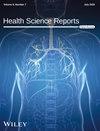Translation and Validation of the Persian Version of the Rotator Cuff Quality of Life Questionnaire (RC-QOL): A Cross-Cultural Adaptation Study
Abstract
Background and Aims
Rotator cuff injuries have a significant impact on shoulder function and life quality. The Rotator Cuff Quality of Life (RC-QOL) questionnaire is a validated tool designed to assess this impact. This study aimed to translate the RC-QOL into Persian, adapting it culturally, and evaluate its psychometric properties in Persian-speaking patients.
Method
The Persian version of the RC-QOL was developed through a rigorous translation and cultural adaptation process, including forward translation, expert review, back-translation, and pilot testing. The final version underwent thorough content and face validity checks. Internal consistency was assessed using Cronbach'α, test-retest reliability was evaluated using the intraclass correlation coefficient (ICC), construct validity was examined using confirmatory factor analysis, and convergent validity was assessed by correlating the RC-QOL with the DASH and WOSI questionnaires.
Results
Among the 176 Persian-speaking participants, the average age was 38.01 ± 9.36 years. The Persian RC-QOL displayed outstanding internal consistency, with Cronbach'α values ranging from 0.84 to 0.88, and strong test-retest reliability, with ICC values between 0.82 and 0.88. Convergent validity was affirmed by significant correlations with DASH and WOSI questionnaires (ranging from −0.863 to −0.895, p < 0.001). Construct validity was confirmed using confirmatory factor analysis, with favorable fit indices: RMSEA = 0.04 and CFI = 0.97.
Conclusion
The Persian version of RC-QOL proves to be a reliable and valid tool for evaluating the quality of life in Iranian patients with rotator cuff injuries. Its successful cross-cultural adaptation enhances its applicability in Iranian clinical and research domains, potentially extending to other Persian-speaking regions.


 求助内容:
求助内容: 应助结果提醒方式:
应助结果提醒方式:


